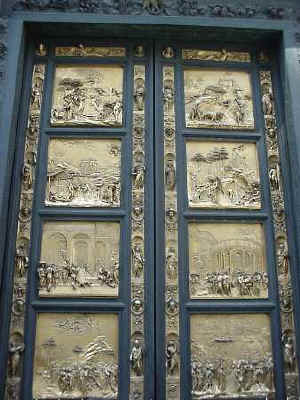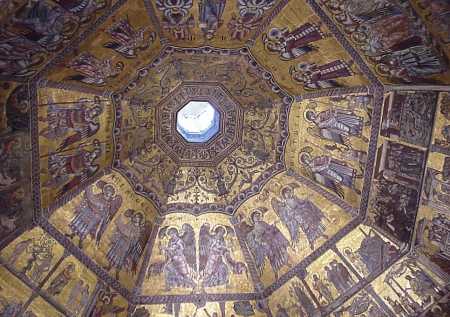 |
 |
 |
Though we couldn't reach Florence by sea, we were determined to visit its treasures. With the boat secure in a Genoa marina, we took an inland trip by train, connecting at Pisa.
 |
Michelangelo's colossal marble statue David is possibly the most famous sculpture in the world. Commissioned by the city, it was completed in 1504 and placed outdoors in the Piazza della Signoria in the center of Florence's political and social life. The original stood outside until 1873, when it was brought here to the Galleria dell'Accademia (Academy of Fine Arts) for students to study and copy, and, of course, to protect it from further assault from the elements. A copy of the statue now stands in its old place in Piazza della Signoria, and another copy graces a square memorializing Michelangelo. |
|
|
|
 |

The Baptistery shares Cathedral Square with an immense Duomo (cathedral). Construction of the present Baptistery shown here began in the mid-11th century. In the fifteenth century, the bronze doors at left were commissioned to mark the city's deliverance from the plague. A competition among the leading artists of the time resulted in the selection of Lorenzo Ghiberti to create the doors, nicknamed by Michelangelo "the gates of paradise". Each door depicts a scene from the Old Testament. The ceiling in the photo on the right side is the Baptistery dome, a mosaic octagon whose bands depict biblical stories and images. |
|
|
|
|
Everywhere you turn in Florence, there is another jewel to see. The altar shown at left is in the Orsanmichele, a 1337 grain market converted into a church. The church itself is quite small, but it still merits a spectacular altar. The outside walls of the church have niches, each of which is adorned by a sculpture commemorating the patron saints of various guilds that existed in Florence. |